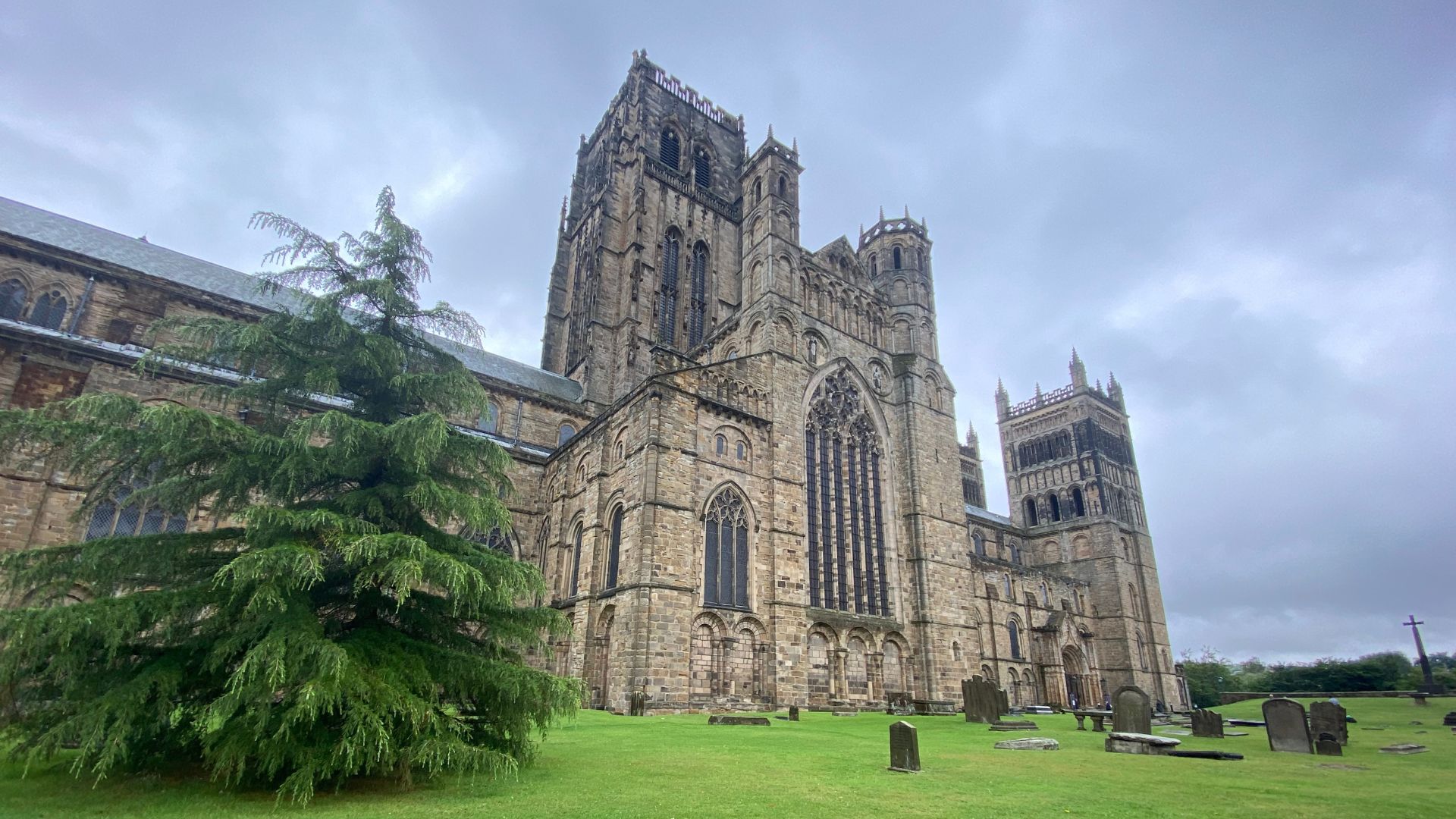8/17/22 Glenda Simpkins Hoffman
A week ago, I returned from my Celtic Pilgrimage to Northern England. A pilgrimage is not the same as a vacation or a sightseeing tour in which we often try to see and do as much as we can to take advantage of the time we have in a new location.
“A pilgrimage is a journey, often into an unknown or foreign place, where a person goes in search of new or expanded meaning about self, others, nature, or a higher good, through the experience. It can lead to a personal transformation, after which the pilgrim returns to their daily life….
“The purpose of Christian pilgrimage was summarized by Pope Benedict XVI in this way:
‘To go on pilgrimage is not simply to visit a place to admire its treasures of nature, art or history. To go on pilgrimage really means to step out of ourselves in order to encounter God where he has revealed himself, where his grace has shone with particular splendor and produced rich fruits of conversion and holiness among those who believe’” (Wikipedia).
Following God on a pilgrimage is reflected in scripture. The Bible is a pattern of conversion as God calls and people follow him, sometimes not knowing where he is leading but trusting him to take them where he wants them to be. While it is an outward journey to particular places, the focus is on the inward journey of being drawn closer to God and his will.
Abraham, Sarah, Moses, and David were among the many people who walked with God. We might say Jesus’ incarnation was a pilgrimage, a journey of descent from heaven to become human as he fulfilled all righteousness in his sinless life. His journey and longing for the Father’s will took him on a journey to real places with real people to whom he preached the good news of the gospel, taught the ethics of the kingdom, and manifested the power of the kingdom in healings and other miracles. Finally, his journey led him to walk to Jerusalem, all the way to the cross. He humbled himself and left home, his human family, and his carpentry work all for the love of God and neighbor.
I joined a group of sixteen who were led on our Celtic pilgrimage by my spiritual director Adele Calhoun, her husband Doug Calhoun, and Susan Skillen. In our first lecture, we learned that to go on pilgrimage is to embrace dislocation, separating ourselves from responsibilities, routines, relationships, and reliance on technology. As we let go of the externals, we open ourselves to grace by slowing down, unplugging, traveling light.
Pilgrimage is a liminal space in which we ask ourselves important questions: What will it cost us to do something different? What will it cost us to let go of what we want in order to love? What will it mean to become a cartographer of the soul’s landscape—inward and outward? On pilgrimage, we don’t just move from one physical place to another. It also involves inward shifts from sin to grace, unforgiveness to forgiveness, bitterness to sweetness, mourning to joy.
One of the invitations that helped me most was being reminded that we each have a five-stringed harp. Learning to tune into our five senses helps us to learn to be fully present to God in the context of our real lives in these physical bodies in God’s good world.
We stayed in dorms on a street right next to Durham Cathedral and enjoyed participating in worship in the cathedral regularly. Worship itself was a rich sensory experience. The beauty of this magnificent cathedral with its stained glass, carved wood, and cut stone overwhelmed us. We listened to the word of God and exquisite music of the resident organist and two visiting choirs. We sang hymns and prayed the liturgy, and tasted the bread of communion. We also enjoyed (some suffered?) the overwhelming aroma of incense.
Throughout the day, I loved having my heart and mind drawn to God by hearing the bells of the cathedral ring on the quarter hour. Even though I have been gone from there a week, I somehow still hear the ringing in my ears.
Throughout our ten-day journey, we continued to play our five-stringed harps as we listened to our gifted teachers share their knowledge and experience so that we could learn the stories of those who have gone before us. We enjoyed sunny days in God’s good creation visiting and seeing many beautiful sights of the ancient ruins of abbeys and monasteries where these holy people lived, worshipped, and ministered: Aiden and Cuthbert of Lindisfarne, Hilda of Whitby Abbey, and Bede from St. Paul’s Monastery in Jarrow. We walked the grounds, touched the stones, smelled the sea air and the fragrance of beautiful flowers. We also tasted and enjoyed an abundance of wonderful meals and afternoon teas.
Our group experienced the hospitality and generosity of God to us through our teachers, through our English hosts and those who served us throughout our stay. Not only did we listen and learn from the stories of saints, we listened and learned from each other as we shared our own life stories and how God was speaking to us through our journey together. We experienced our Holy Three-in-One God encircling us and knitting us together as a community in our short time together. As we prepared to conclude our time together, we considered how God is inviting us in the future to the Celtic way of living with humility, holiness, and hospitality in our lives as we return home.
I’m deeply grateful for this blessed time away—for this congregation giving me the time to be away, for the Clergy Renewal Grant that made it possible, and for my husband who held down the fort at home so I could go. I truly did experience a time of refreshment and renewal, and I will look forward to sharing more reflections from this Celtic Pilgrimage in the weeks ahead.


